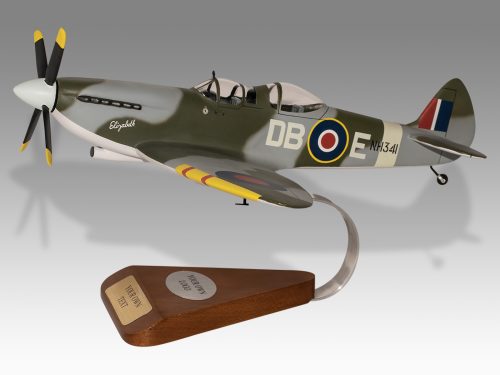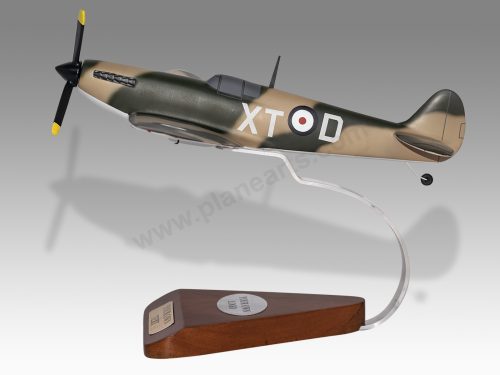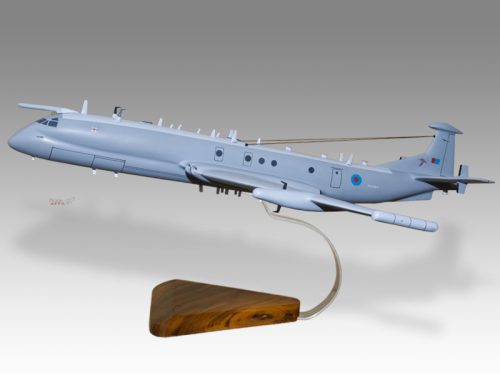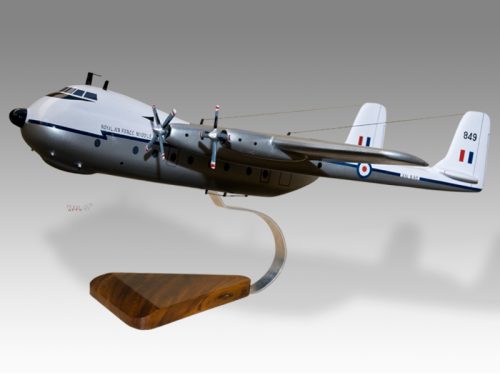CAC CA-15 Kangaroo RAAF
Production Time 11 to 12 weeks
Shipment is by FedEx, UPS or DHL International Express Courier with a normal door-to-door delivery time worldwide of within 2-3 business days after dispatch. Due to the current volatility of world fuel prices, the amount mentioned here is our best estimate for DHL and UPS and may be subject to change at the time of shipping.

Model Description: CAC CA-15 Kangaroo RAAF Wood Replica Scale Custom Model Aircraft
Manufacturer: Commonwealth Aircraft Corporation
Wingspan: 16.8 Inches (42.7 Centimeters)
Height: 6.5 Inches (16.5 Centimeters)
Scale: 1:26
$324.50
Production Time 11 to 12 weeks
-
United States dollar ($)
-
Pound sterling (£)
-
Euro (€)
-
Australian dollar ($)
-
Canadian dollar ($)
-
Singapore dollar ($)
-
Swiss franc (CHF)
-
Japanese yen (¥)
-
Danish krone (kr.)
-
Hong Kong dollar ($)
-
Norwegian krone (kr)
-
Swedish krona (kr)
-
United Arab Emirates dirham (د.إ)
General Product Description
Our PlaneArt CAC CA-15 Kangaroo RAAF model exhibits unique, unrivaled quality and detailed design to come as close as possible to the accuracy of the actual plane. It comes as standard with a robust, durable base or stand which is available in a variety of different finishes designed to match your own personal requirements including solid wood, wood with polished metal supports or adjustable wood wall mount and will be ready within about 9-10 weeks from placement of order.
The CAC CA-15 Kangaroo RAAF model is made of the finest kiln dried renewable mahogany wood (commonly known as Lauan or Meranti) which has undergone many stages of carving and meticulous and careful sanding giving the beautiful, finished museum quality masterpiece. Many collectors and model connoisseurs demonstrate their preference for genuine handmade and hand painted mahogany wood models rather than plastic or die cast (diecast) alternatives due to the overall look and totally different feel of the item - we trust you will find the same. We can however, if required produce the same model in Solid Cast Resin so just click and contact us for further information. Our craftsmen and gifted artisans ensure that our finely handcrafted model airplanes match the precise blueprint details of the original aircraft. The paint scheme, markings and parts are closely matched, reflecting the original aircraft. This stylish top-quality desktop replica model will surely enthrall anyone who receives this as a gift and for sure one of the most appropriate and desirably collectable gifts for any aviation enthusiast or avid military jet aircraft collector whilst also displaying a perfect resemblance to the actual real life version.
There are many types of military jet aircraft, but the basic types are bombers, fighters, fighter bombers, spotter planes, transporters, patrol aircraft, trainers, and reconnaissance and observation aircraft. All these types of aircraft are used for different types of missions. If you're a fan of historic or present-day military aviation, our model aircraft will bring the excitement and character of these aircraft right into your own home.
If you require, we can also make the CAC CA-15 Kangaroo RAAF model in any other military, government or even private livery or colour scheme you require and if necessary, in a different size or scale. Just click here to contact us with a description or photographs of what you require, and we will let you have a quotation for the necessary customization by return email. We can also make bespoke scale replicas of any other private / civil commercial airliner or airliners, helicopter, glider, gliders with engines, military propeller, warplane jets, biplane, triplane, tail fin, spacecraft, rocket or NASA model you require in any airline, military or civilian livery or colors. We also produce model airships, blimps, dirigibles, blimps, boats, and ship collectibles. Wall plaque or seal for military, government or private customers. Again, by clicking here to contact us just let us know exactly what you need.
The Forgotten Marvel: The CAC CA-15 Kangaroo – RAAF Unfulfilled Promise
The CAC CA-15, affectionately nicknamed the “Kangaroo,” is a remarkable yet often overlooked chapter in the history of Australian aviation. Developed by the Commonwealth Aircraft Corporation (CAC) during World War II, the CA-15 was an ambitious attempt to create a high-performance fighter aircraft that could stand toe-to-toe with the best designs of the era. Although it never saw combat, the Kangaroo remains a symbol of Australia’s ingenuity and determination in the face of global conflict.
The Vision Behind the CA-15:
In the early 1940s, Australia found itself heavily reliant on foreign aircraft designs, primarily from the United States and the United Kingdom. Recognizing the need for domestic production capabilities, the Australian government encouraged local manufacturers to develop indigenous aircraft. The CA-15 was born out of this push for self-reliance.
The design of the CA-15 was initially influenced by the North American P-51 Mustang, one of the most successful fighter planes of the war. However, the Kangaroo was not a mere copy. Under the guidance of CAC’s chief designer, Fred David, the CA-15 evolved into a unique aircraft with several innovative features.
Design and Development:
The CA-15 was a single-seat, all-metal fighter with a sleek and aerodynamic profile. It was powered by the Rolls-Royce Griffon 61 engine, which gave it an impressive top speed of around 448 mph (721 km/h). This made the CA-15 one of the fastest piston-engine fighters of its time, comparable to the best Allied and Axis designs.
The CAC CA-15 Kangaroo RAAF was armed with six .50 caliber machine guns, giving it formidable firepower. Its design emphasized speed, maneuverability, and endurance, making it well-suited for both dogfighting and ground-attack missions. The CA-15 also featured a bubble canopy, providing the pilot with excellent visibility, a crucial advantage in aerial combat.
The End of the Road:
Despite its promising design, the CA-15 faced numerous challenges. The development process was delayed by several factors, including the need to prioritize other aircraft that were already in production. By the time the prototype was ready for its first flight in 1946, World War II had ended, and the demand for new piston-engine fighters had diminished.
The advent of jet-powered aircraft further overshadowed the CA-15’s prospects. With the rapid advancement of aviation technology, the RAAF’s focus shifted to jets, and the CA-15 was deemed obsolete before it could enter full production. Only one prototype was ever built, and after extensive testing, the project was eventually canceled.
Legacy of the Kangaroo:
Although the CAC CA-15 Kangaroo never entered service, its legacy lives on as a testament to Australian engineering and innovation. The aircraft demonstrated that Australia had the capability to design and build world-class fighters, even in the face of immense challenges. Today, the sole CA-15 prototype resides in the Australian National Aviation Museum, where it stands as a tribute to the ingenuity and ambition of those who worked on the project.
The CA-15 is a reminder of a time when Australia sought to carve out its place in the global aviation industry, striving to create something uniquely its own. While the Kangaroo may not have taken to the skies in combat, its story continues to inspire and captivate aviation enthusiasts and historians alike.
Conclusion:
The CAC CA-15 Kangaroo remains one of the great “what-ifs” of aviation history. Had it been developed a few years earlier, it might have played a significant role in the air battles of World War II. Instead, it serves as a fascinating example of Australia’s determination to stand on its own two feet, even in the highly competitive and rapidly evolving field of aircraft design. The Kangaroo may not have reached its full potential, but its place in the annals of aviation history is secure.
| Weight | 6 kg |
|---|---|
| Dimensions | 17 × 16.8 × 6.5 in |
Be the first to review “CAC CA-15 Kangaroo RAAF” Cancel reply
Similar Models
Helicopters
Military Airplanes - Propeller
Military Airplanes - Propeller
Military Airplanes - Propeller
Private & Civilian
Military Airplanes - Propeller
Military Airplanes - Propeller
Military Airplanes - Propeller
Military Airplanes - Propeller
Military Airplanes - Propeller
Boats, Ships & Submarines
Boats, Ships & Submarines
Helicopters
Military Airplanes - Propeller
Military Airplanes - Propeller
Military Airplanes - Propeller
Military Airplanes - Jet
Military Airplanes - Jet
Military Airplanes - Jet
Military Airplanes - Jet
Military Airplanes - Propeller
Military Airplanes - Propeller
Military Airplanes - Propeller
Military Airplanes - Propeller
Military Airplanes - Propeller
Military Airplanes - Propeller
Military Airplanes - Jet
Military Airplanes - Jet
Military Airplanes - Jet
Military Airplanes - Jet
Military Airplanes - Jet
Military Airplanes - Jet
McDonnell Douglas FA-18 Hornet RAAF: Superior Aviation Mastery
Military Airplanes - Jet
Military Airplanes - Jet
Military Airplanes - Jet
Military Airplanes - Propeller
Military Airplanes - Propeller
Private & Civilian
Military Airplanes - Propeller
Military Airplanes - Propeller
Military Airplanes - Jet
Military Airplanes - Jet
Military Airplanes - Propeller
Military Airplanes - Propeller
Military Airplanes - Propeller
Military Airplanes - Propeller
Military Airplanes - Jet
Military Airplanes - Jet
Military Airplanes - Jet
Military Airplanes - Propeller
Military Airplanes - Jet
Military Airplanes - Jet
Military Airplanes - Jet
Military Airplanes - Propeller
Military Airplanes - Propeller
Military Airplanes - Propeller
Military Airplanes - Jet
Military Airplanes - Jet
Private & Civilian
Military Airplanes - Jet
Private & Civilian
Military Airplanes - Propeller
Military Airplanes - Propeller
Military Airplanes - Propeller
Military Airplanes - Propeller
Military Airplanes - Propeller
Military Airplanes - Propeller
Military Airplanes - Propeller
Military Airplanes - Propeller
Military Airplanes - Propeller
Military Airplanes - Propeller
Private & Civilian
Military Airplanes - Jet
Military Airplanes - Jet
Military Airplanes - Propeller
Military Airplanes - Propeller
Military Airplanes - Propeller
Helicopters
Military Airplanes - Jet
Military Airplanes - Jet
Military Airplanes - Jet
Blackburn Buccaneer RAF 237 Operational Conversion Unit OCU Squadron
Private & Civilian
Military Airplanes - Jet
Military Airplanes - Jet
BAe British Aerospace Hawk T.1 Mk.1 Royal Air Force RAF Red Arrows
Military Airplanes - Jet
Military Airplanes - Propeller
Military Airplanes - Propeller
Military Airplanes - Propeller
Military Airplanes - Propeller
Military Airplanes - Propeller
Military Airplanes - Propeller
Military Airplanes - Propeller
Military Airplanes - Propeller
Military Airplanes - Propeller
Military Airplanes - Propeller
Private & Civilian
Private & Civilian
Military Airplanes - Jet
Military Airplanes - Propeller
Helicopters















































































































Reviews
There are no reviews yet.